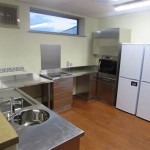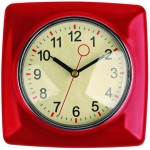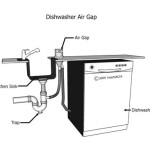Unlocking The Potential Of Child Kitchen Setup
A child kitchen setup transcends mere play; it serves as a dynamic environment for fostering essential life skills, creativity, and cognitive development. Understanding the potential embedded within these miniature culinary spaces allows parents and educators to leverage them for maximum benefit. This article explores the multi-faceted advantages of child kitchen setups and provides insights into optimizing their use.
The appeal of a child kitchen often stems from its imitation of real-world activities. Children naturally gravitate towards mimicking the actions of adults, and the kitchen, often the heart of the home, becomes a focal point. Providing a safe and scaled-down version of this environment allows children to explore these activities without the risks associated with real cooking appliances.
The benefits derived from a well-equipped and engaging child kitchen extend far beyond simple entertainment. It offers opportunities for educational exploration, skill development, and imaginative play that contribute significantly to a child's overall growth.
Enhancing Cognitive Development and Problem-Solving Skills
One of the primary benefits of a child kitchen setup lies in its ability to stimulate cognitive development. Engaging with various kitchen tools, utensils, and play food items encourages children to think critically and solve problems. Pretend cooking scenarios often necessitate strategic thinking, such as planning a meal, following a recipe (even if imaginary), and allocating ingredients. This process indirectly promotes the development of executive functions, including planning, organization, and working memory.
Furthermore, the act of measuring and portioning ingredients, even in a pretend setting, introduces fundamental math concepts. Children can learn about volume, quantity, and spatial reasoning while scooping, pouring, and arranging play food items. This hands-on experience makes abstract mathematical concepts more tangible and relatable.
The social aspect of playing in a kitchen environment also contributes to cognitive development. When children play together, they must negotiate roles, share resources, and resolve conflicts. These interactions enhance their communication skills, empathy, and ability to collaborate effectively. Through collaborative play, children learn to understand different perspectives and work towards common goals.
Moreover, a child kitchen setup can act as a catalyst for language development. Children often engage in dramatic play, creating narratives and dialogues surrounding their cooking activities. This practice allows them to expand their vocabulary, improve their sentence structure, and enhance their storytelling abilities. Describing the ingredients, the cooking process, and the final "dish" provides ample opportunities for verbal expression.
Fostering Creativity and Imaginative Play
Beyond cognitive development, a child kitchen setup serves as a fertile ground for fostering creativity and imaginative play. The open-ended nature of the environment allows children to create their own scenarios, invent recipes, and explore different roles. They can become chefs, bakers, food critics, or even restaurant owners, unleashing their imagination and expressing themselves freely.
Providing a variety of props and accessories can further enhance the imaginative possibilities. Play food items representing diverse cultures and cuisines can expose children to different culinary traditions and inspire them to create unique and innovative dishes. Simple additions like aprons, chef hats, and oven mitts can further immerse children in the role-playing experience.
The absence of strict rules and guidelines in a child kitchen allows children to experiment and explore without fear of failure. They can mix and match ingredients, create unusual flavor combinations, and invent their own cooking techniques. This freedom encourages them to think outside the box, take risks, and develop their own unique creative vision.
Furthermore, imaginative play in a kitchen setting can help children develop their problem-solving skills. When faced with imaginary challenges, such as running out of an ingredient or dealing with a "burnt" dish, they must come up with creative solutions. This process encourages them to think on their feet, adapt to changing circumstances, and find innovative ways to overcome obstacles.
Developing Practical Life Skills and Promoting Self-Sufficiency
A child kitchen setup provides a safe and engaging environment for children to develop practical life skills that can contribute to their self-sufficiency. While engaging in pretend cooking, children can learn about food preparation, hygiene, and basic kitchen safety. They can practice washing play dishes, wiping counters, and organizing utensils, instilling good habits from a young age.
Furthermore, a child kitchen can serve as an introduction to healthy eating habits. By providing a variety of play food items representing different food groups, parents and educators can teach children about the importance of a balanced diet. Children can learn to identify fruits, vegetables, grains, and proteins, and understand their nutritional value.
The act of planning and preparing a meal, even in a pretend setting, can also foster a sense of responsibility and independence. Children can learn to make choices about what they want to eat, how they want to prepare it, and who they want to share it with. This process empowers them to take ownership of their actions and develop a sense of self-efficacy.
Moreover, a child kitchen can be used to teach children about basic cooking skills, such as measuring ingredients, following instructions, and using kitchen tools safely. While they may not be cooking with real heat or sharp objects, they can still learn the fundamental principles of cooking and develop a foundation for future culinary endeavors. Supervising an older child to use simple baking kits with actual ingredients within the play kitchen setting can be a fantastic transition to real cooking while still enjoying the fun environment.
The long-term benefits of developing these practical life skills extend beyond the kitchen. Children who are comfortable and confident in the kitchen are more likely to be independent, self-sufficient, and responsible adults. They will be better equipped to prepare their own meals, manage their households, and contribute to their communities.
Selecting the right type of child kitchen setup is crucial for maximizing its benefits. Factors to consider include the child's age, developmental stage, and interests. Younger children may benefit from simpler kitchens with basic features, while older children may prefer more elaborate kitchens with realistic appliances and accessories. Durability and safety should also be primary considerations when choosing a child kitchen. The materials should be non-toxic and easy to clean, and the design should be free of sharp edges or small parts that could pose a choking hazard.
The placement of the child kitchen is also important. Ideally, it should be located in a space where the child can easily access it and engage in imaginative play without disrupting other activities. A playroom, living room, or even a corner of the kitchen can be suitable locations. Providing adequate lighting and ventilation can also enhance the play experience.
Encouraging interaction with the child kitchen is essential for realizing its full potential. Parents and educators can engage in pretend play with children, offering guidance, suggestions, and encouragement. They can also incorporate educational activities, such as counting play food items, identifying colors, and learning about different cuisines. The key is to create a supportive and stimulating environment that fosters exploration, creativity, and learning.
The addition of specific items can further enhance the learning experience. Consider incorporating play cookbooks with simple recipes, measuring cups and spoons for teaching fractions, and reusable shopping bags for pretend grocery shopping. These tools can help bridge the gap between pretend play and real-world skills.
Regularly rotating the play food items and accessories can also keep the child kitchen fresh and exciting. Introducing new ingredients, utensils, and cooking tools can spark new ideas and encourage children to explore different culinary possibilities. This rotation also promotes adaptability and resourcefulness.
Ultimately, a child kitchen setup is a valuable investment in a child's development. By providing a safe, engaging, and stimulating environment, parents and educators can unlock the potential for cognitive growth, creative expression, and the development of essential life skills. The kitchen becomes more than just a play area; it transforms into a space for learning, exploration, and the cultivation of future culinary talents.

Montoddler Foldable Learning Tower For Toddlers

Teaching Basic Cooking Skills To Teens With Autism

Montoddler Foldable Learning Tower For Toddlers

Heavy Duty All In One Kitchen At Lakeshore Learning

At What Age Should A Child Start Cooking Kids Cook Real Food

Ultimate Guide To Storage Ideas For A Small Kitchen Worthing Court Diy Home Decor Made Easy

Ultimate Guide To Storage Ideas For A Small Kitchen Worthing Court Diy Home Decor Made Easy

8 Ideas For A Multifunctional Kitchen Design Granite Transformations
A Guide To Childproofing Your Home

Guide To Redesigning Your Kitchen This Old House
Related Posts








